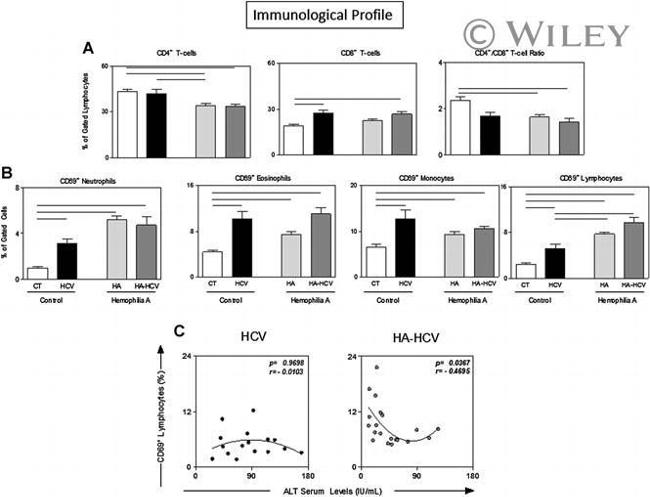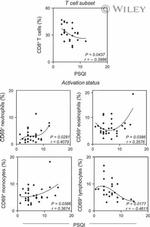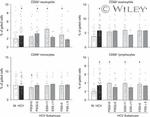Search Thermo Fisher Scientific
Invitrogen
CD69 Monoclonal Antibody (CH/4), FITC
Product Details
MHCD6901
Species Reactivity
Published species
Host/Isotype
Class
Type
Clone
Immunogen
Conjugate
Excitation/Emission Max
Form
Purification
Storage buffer
Contains
Storage conditions
Shipping conditions
RRID
Product Specific Information
Commonly used, FITC conjugates provide relatively high absorptivity, excellent fluorescence quantum yield, and good water solubility.
Target Information
CD69 (AIM, Active Inducer Molecule) is a gp28/34 disulfide bonded homodimer with a molecular weight of 60 kDa under non-reducing conditions. CD69 contains one or two N linked oligosacaride and the molecule is present on activated platelets. In normal peripheral blood a variable percentage of cells express the CD69 antigen, and it is involved in lymphocyte signal transduction. Expression CD69 is induced upon activation of T lymphocytes, and may play a role in proliferation. Furthermore, the protein may act to transmit signals in natural killer cells and platelets. Alternative splicing results in multiple transcript variants of CD69. Diseases associated with CD69 dysfunction include coccidiodomycosis and asthma.
Analyte Specific Reagent
How to use the Panel Builder
Watch the video to learn how to use the Invitrogen Flow Cytometry Panel Builder to build your next flow cytometry panel in 5 easy steps.
Bioinformatics
Protein Aliases: Activation inducer molecule; activation inducer molecule (AIM/CD69); AIM; BL-AC/P26; C-type lectin domain family 2 member C; C-type lectin domain family 2, member C; CD69; CD69 antigen (p60, early T-cell activation antigen); EA1; Early activation antigen CD69; early lymphocyte activation antigen; Early T-cell activation antigen p60; GP32/28; Leukocyte surface antigen Leu-23; MLR-3
Gene Aliases: AIM; BL-AC/P26; CD69; CLEC2C; EA1; GP32/28; MLR-3
UniProt ID: (Human) Q07108
Entrez Gene ID: (Human) 969

Performance Guarantee
If an Invitrogen™ antibody doesn't perform as described on our website or datasheet,we'll replace the product at no cost to you, or provide you with a credit for a future purchase.*
Learn more
We're here to help
Get expert recommendations for common problems or connect directly with an on staff expert for technical assistance related to applications, equipment and general product use.
Contact tech support




